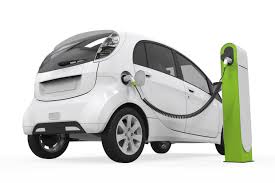This week’s Automotive News featured an article about the Chevy Bolt and other EV’s that are about to hit the market that, like the Tesla, are designed from scratch and are changing the paradigm for electric vehicles and all vehicles. There are some interesting data points in the following that will help understand how this market is changing.
The key takeaway is that even though EV’s are only a very small sliver of market today and haven’t taken off the way some thought they would by now, manufacturers are still pumping billions of $$$$ into them on the belief that they are the future. And furthermore, it’s the perfect platform for autonomous driving and also for all the other wild technology that is already, in some cases, being installed.
THE EVERYDAY EV
Electrification powers automakers’ broader plans for future mobility
Mike Colias
Automotive News
January 11, 201
LAS VEGAS — Two of the world’s largest automakers hit the stage at the planet’s biggest technology confab here last week to talk about — electric vehicles? Aren’t those so 2011?
Chevrolet’s Bolt EV and Volkswagen’s BUDD-e concept were the stars of the two big automotive keynotes at the Consumer Electronics Show. But by the time General Motors CEO Mary Barra and VW brand chief Herbert Diess were done telling their respective audiences about all the whiz-bang features packed into their cars — gesture controls, a rearview mirror with streaming video, a connection to the home thermostat –– the electric drivetrain was reduced to an afterthought.
Their keynotes highlighted just how far the very idea of electrification has come. Five years ago, the Chevy Volt and Nissan Leaf were one-off science experiments for geeks and greenies. Today, EVs are being baked into automakers’ future vehicle strategies — $2 gasoline and tepid sales be damned. Electrification is fast becoming just one piece of a broader showcase of connectivity and convenience as automakers try to find the right recipe for the future of urban mobility.
“The story is moving beyond electrification. It’s just an enabler now for other coming trends,” said Pam Fletcher, the executive chief engineer in charge of GM’s electrification portfolio.
“The Bolt EV is really a purpose-built car for the sharing economy,” Fletcher said. “That’s a completely different story than ‘Where are gas prices at?’ Forget it. That’s not the conversation anymore.”
Of course, tightening fuel economy regulations and California’s zero-emissions mandates are prodding automakers to develop EVs despite an ambivalent buying public. But GM and other companies are thinking beyond so-called compliance cars to offer practical daily drivers, increasingly with an eye toward a future in which EVs will be in high demand, says IHS Automotive analyst Egil Juliussen.
Once self-driving cars become a reality — about a decade out, Juliussen predicts — they will spawn urban mobility services that “will clearly favor EVs” over internal combustion engines because of pollution and EVs’ lower operating costs, he says. “That’s a big reason why you’re seeing so much activity in the EV space even though the market so far has been a bit of a disappointment.”
That suggests cars such as the Bolt EV eventually could feed the future self-driving vehicle network that GM plans to develop with ride-sharing company Lyft under a partnership announced last week.
Tesla playbook
To build EVs with broader consumer appeal, GM and VW are taking a page from Tesla Motors’ playbook by creating flexible platforms built expressly for electric drivetrains. That frees up cabin space for efficient interior layouts that allow users to experience all of those cool connectivity features in comfort. (GM starts Bolt EV production by year end; the BUDD-e concept is more of a year 2020 vision, Diess said.)
On each vehicle, a flat battery pack is positioned between the front and rear axles, allowing designers to drop the floor for much easier passenger entry and exit. Doing away with an internal combustion engine allows for short front and rear overhangs and greater interior room on a small footprint. The BUDD-e has the wheelbase of a Toyota Sequoia and the overall length of a RAV4, VW says, making way for an L-shaped bench seat and swiveling front passenger seat.
VW officials said the platform, which they call the Modular Electric Toolkit, or MEB, could be used to underpin vehicles ranging in size from a minicar to a full-size luxury sedan.
“Basically we are breaking up the conventional dimensions on how vehicles are being built with that kind of platform,” said Joerg Sommer, VW of America’s product planning chief. “That’s the beauty of it. You’re disrupting what people know.”
GM global product chief Mark Reuss said the Bolt EV’s platform is GM’s first EV-specific architecture since the innovative but ultimately doomed EV1 electric car in the 1990s.
He believes the new platform is key to solving the problems of EVs today, which arise from automakers shoehorning electric drivetrains and girthy battery packs into vehicle architectures designed for combustion engines. That requires EVs to carry mass they don’t need — Reuss calls it “scar mass” — which curbs range and begets bigger battery packs that take longer to charge. It all adds up to a higher price tag for a car that’s a tough sell as a daily driver.
“The formula became an excuse for people not to buy electric vehicles,” Reuss said.
Bolt cracks code
The setup of the Bolt EV “cracks the code” for an affordable, long-range EV that can serve as an owner’s primary vehicle, Reuss believes. It gets an estimated range of more than 200 miles at a price of around $30,000, after the $7,500 federal tax credit.
But GM’s Fletcher says those numbers are just a starting point, a platform on which to add features that will make drivers’ lives easier.
“We’ve checked the boxes on affordability and range,” Fletcher says. “From there the question becomes “What do customers really want?”
You can reach Mike Colias at mcolias@crain.com.



